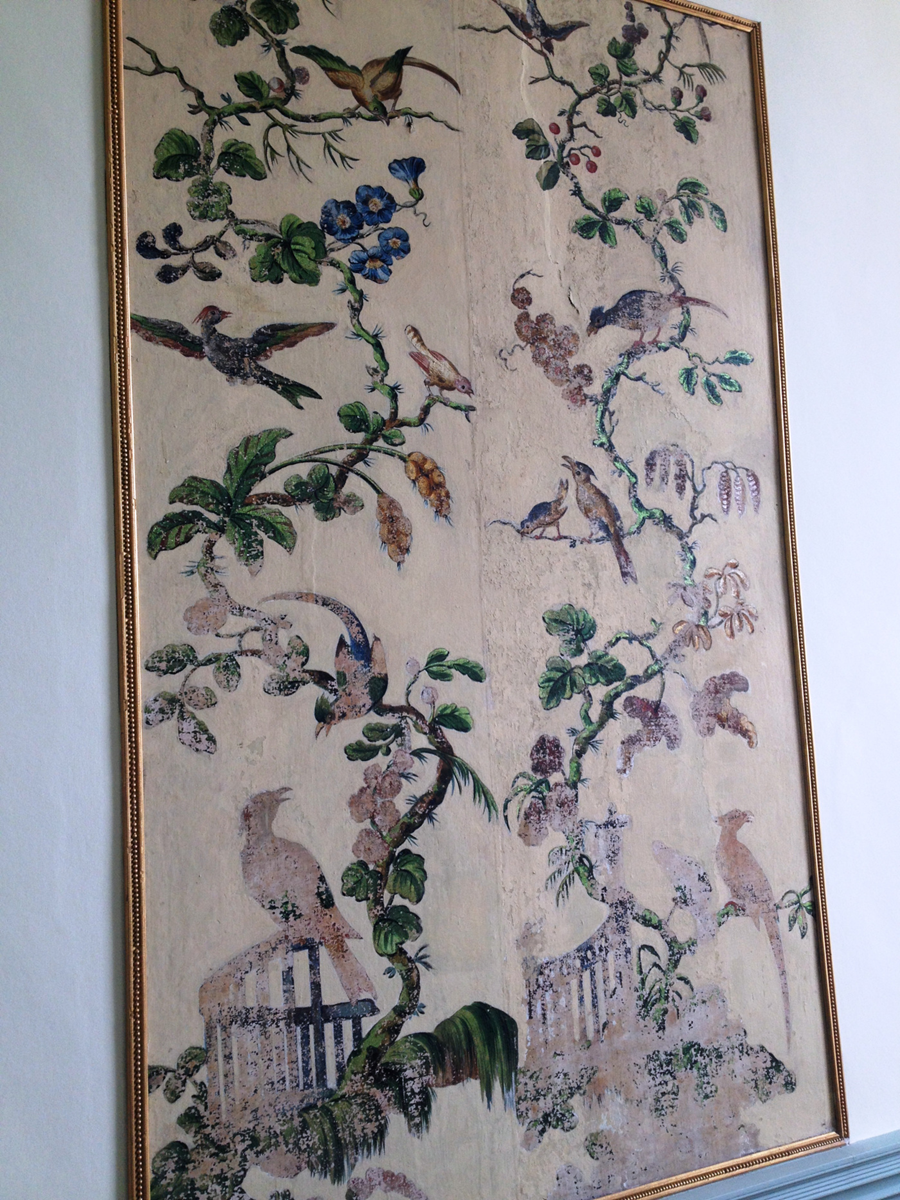Restoration Intern Oriental Tales
23 August 2015

According to the Benton Seeley Guidebooks, the original guides produced for eighteenth-century visitors, the Japan Room was part of a suite of three rooms in the east wing since the 1680s. These became known as the Chandos Suite, or even the Duchess’s Rooms, as the 1st Duke’s wife, Lady Anna Eliza Brydges, who was also lady and heiress to the third Duke of Chandos, spent a lot of her time there.
Lady Anna Eliza didn’t take much of a liking to Stowe: she complained it was too big, and preferred her family home, Avington House, Winchester, where she resided as often as possible. This explains the painting of the hall that has been inserted into one of the wall panels, hardly an oriental touch with its flouncy red bow.
The oriental birds that feature in the remaining panels have been painted in a Japanese style, but by European painters. During the eighteenth century, as travel became easier and travellers more adventurous, there was a fashion for exotic art such as this to demonstrate wealth. This room holds a collection that appears to be from three separate artists, and given to the Duke and Duchess, it is suggested, by Prince Frederick who would have become king if he had not predeceased his father, George II.
The panels had suffered both heat and water damage, the direct victims of modern radiators and ceiling leaks respectively. The quality of the original work, however, was exquisite. The iridescent paints and colours that had been used were difficult to match. This led SHPT to the decision to conserve them rather than risk attempting a restoration project and a loss of such a unique finish. The oriental works remain perched primly in their secret hideout, bringing the Duchess’ far-fetched paradise inside Stowe’s walls.